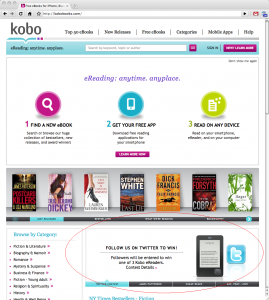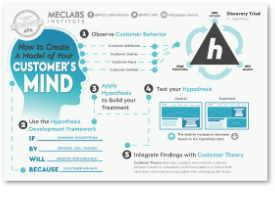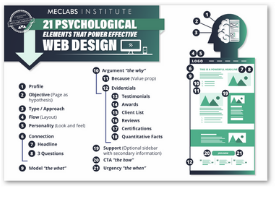Content Marketing: How to get your subject matter experts on your corporate blog
At MarketingSherpa, we’ve noticed that inbound marketing is a growing tactic that is starting to show consistent results for marketers, which is why we’re launching an Inbound Marketing newsletter in 2011. For example, according to the MarketingSherpa 2011 B2B Marketing Benchmark Report, the majority of B2B organizations are increasing their marketing budgets for inbound tactics like social media and SEO.

So, I was a little surprised by a recent statistic that came across my desk. Out of 534 Fortune 1000 CMOs surveyed byBlog2Print, only 23.2 % utilize corporate blogs. As a content marketing insider, I thought everyone and their sister (well, my sister is at least) is blogging. But that’s my problem. As a content marketing insider, I get all tingly when I see my blogs’ names up in lights on a tree (no, that’s not a Christmas reference. For a creative interesting inbound marketing tactic, check out The Blog Tree by Eloqua and Jess3. And thanks, Joe!)
So I pulled another Sherpa book off my shelf (the 2010 Social Media Marketing Benchmark Report, for those keeping score at home), and noticed that while marketers find blogging to be one of the most effective social media tactics (behind only blogger relations and microblogging), it is also one of the most difficult (second only to blogger relations).
So, to help you kick start your blog in the new year (or kick start the new year with a new blog), here’s a three-part answer to a question that I find marketers often struggle with: How can I get subject matter experts onto my corporate blog?
Step #1: Make it easier
While I have the luxury of a highly talented team of reporters and writers here on the MarketingSherpa blog, over on the MarketingExperiments blog we rely on subject matter experts who have better things to do than write blog posts. Their time is valuable. And one way they don’t want to spend it is figuring out a blog platform.
Yet, when I first started with that blog, our research analysts were publishing their own posts. They were going into WordPress, wrestling with picture layouts, the whole nine. We quickly removed that impediment. All we require is a poorly written Word document. Sometimes just an interview. Heck, once I even received a blog post written in Excel from a data analyst.
We don’t need their writing (or blog posting) skills. We can do that for them. We just want their subject matter expertise. Because these guys (and gals) are smart, and there is no way we can replicate their years of research and experience.
You might not have the exact same infrastructure, but ask yourself this – is there any way I can make the entire process easier? Ask them to forward an email they’ve already written. Take them for a walk and pick their brain. Heck, check out what they scribble on whiteboards throughout the day. After all, while they may be engineers or architects, they certainly aren’t writers. And they don’t need to be.
Step #2: Show them what they know
Another thing I’ve found with subject matter experts is that they are, as the name implies, experts. That means they have extremely deep knowledge. So, sometimes they set too high a bar for themselves. They don’t realize that their likely audience is not…well, experts. So when it comes to putting themselves out there in the world, they want to write a deep, knowledgeable post that will take them three weeks to compose and possibly will only be understood by three people.
Or they could swing in the other direction. They assume that everyone knows what they know and they would be mocked for even thinking about writing about such a simplistic topic. “Pssshhh. Everyone knows a 3.89-meter transinducer couldn’t stand up to the shock of multiple neutron bomb strikes with a 12 parsec velocity” Substitute the word “transinducer” with “server specs” or “mortgage regulations” and you’ll likely face the same challenge.
It’s something we wrestle with on our blogs as well. Where is the sweet spot? We don’t want to write content that is too elementary or too advanced. But sometimes I overshoot as well and forget that simple blog posts can be very helpful, as we’ve found with recent blog posts about email marketing and landing page optimization.
So challenge your SMEs (I love that abbreviation…so Peter Pan-esque) with this question – if I was new to our industry, what are the first three things you would want me to know? A treasure trove of blog post lies in the answer to that question.
Step #3: Reward them (differently)
While doing good is its own reward, writing a blog post is not. It’s one more task you’re throwing onto an already too big heap. After all, they (like you) are busy.
And, essentially, what you’re trying to do here is make a sale. Getting a subject matter expert to write a blog post is a conversion. So work up some of your marketing mojo and make sure there is a true value exchange. You are buying some of their precious and scarce time, and what do you have to offer in return?
While it is part of everybody’s job to help make the company more successful, in fairness, you will be getting more than you’re giving. Still, it’s important to reward your SMEs (more than Captain Hook did for Mr. Smee, that’s for sure) for the time and effort they put in to help grease the wheels for you as you try to get future blog posts from that subject matter expert.
But there is no one-size-fits-all solution that makes a good reward for a blog post. So, you must ask yourself – what motivates my subject matter experts? Here are a few types of subject matter experts and the rewards that might be most helpful to them (most people are a combination of the below archtypes):
- The Aspiring Industry Rock Star – Show them all the recognition they’re getting around the Web and particularly in your industry. Show them how their post was tweeted or quoted by an industry luminary.
- The Plumber – As Eddie Vedder said, “I want to be the plumber of rock stars.” Some people just like helping others and making a difference. For these people, share feedback you’ve received from your audience showing them how they helped move the needle in people’s careers and in their lives.
- The Ladder Climber – For these people, it’s all about career growth. So, do what you’re doing for the plumbers and the rock stars, just make sure that their boss (and their boss’s boss) knows about it as well.
- The Bottom Liner – It’s all about the Benjamins, baby. One of the reasons we all work, we all leave our loved ones and head out on that 6:35 train, is for filthy lucre. Try to work with your management in getting a little something extra for bloggers. A $25 Starbucks gift card for the blogger with the most tweets every month. A small year-end bonus for the person with the most comments. If it’s worth doing, it’s worth properly incenting.
And always, always, always give credit where it’s due. Speaking of which, thanks to Ruth White-Cabbell of Cisco for a conversation that inspired this post, and our own Joelle Parra for copy editing and Sean Kinberger for designing and posting what you just read.
Related resources
Create and Manage a Team-Authored Blog: 8 steps to reap SEO gains
How to Keep Your Blog Out of a Courtroom – Advice from a Legal Pro on Providing, Creating Content – Member’s Library
The MarketingExperiments Quarterly research Journal, Q3 2010
photo by: Mai Le





















